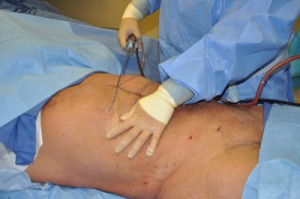
In reality, the long-term effects of liposuction in terms of sustainability has not really been studied in any prospective controlled manner. Much of what is said about this issue is based largely on anectodal observations as well as numerous unfounded truths or myths that are propagated amidst the general public. (not to mention doctors as well) Suffice it to say that studying fat and body mass behavior is difficult due to many variables such as genetic make-up, environment influences and lifestyle. There are few if any truly homogenous liposuction patients other than that they have all agreed to undergo the surgery.
But the biology of fat cells and what happens to them over one’s lifetime has been extensively researched and new insights into their behavior have been gained in the past decade. Granted much of this fat work has been done from the perspective of obesity and not liposuction per se. But what can be gleaned from fat biology research that may at least partially address what may happen after liposuction?
There is an historic belief that you are born with a certain number of fat cells and they remain constant throughout life. I have heard this said many times, even from plastic surgeons, and this perception undoubtably serves as the basis for the belief that ‘once liposuction removes fat cells they can not come back’. (implying a permanency to the procedure) The reality is that this statement is both true and false. The number of fat cells increases up through puberty but actually remains relatively constant throughout adult life. This is supported by numerous studies that have demonstrated that after weight loss over months to years fat cell volume decreases but fat cell number remains constant. Even in cancer cachexia severe volume depletion occurs but not cell number. Conversely, significant weight gain results in an increase in fat cell volume but not number. Thus weight gain in adulthood is primarily the result of changes in fat cell volume.
Once could thus conclude that at some point in one’s development the final fat cell number is established and no further fat cell activity occurs. However, this static viewpoint of the fat cell population is incorrect. Fat cells are now known to be a very dynamic tissue that is far from a mere quiescent depot of lipids. They are a highly regulated cell population that undergoes significant turnover. Old adipocytes are constantly replaced by new ones such that it has been estimated that half of all fat cells are replaced every eight years or so in humans. (roughly 10% cell renewal every year) These replacements come from the progenitor cells (preadipocytes) in the stromal vascular fraction of fatty tissue.
How this process is regulated is not precisely known but it appears that these preadipocytes are stimulated to become an actual fat cell to keep pace with those fat cells that are dying, thus keeping fat mass in constant flux but the fat cell numbers constant. This fat cell homestasis effect gives potential credence to a contrarian liposuction effect that ‘whatever fat cells are removed will be replaced and the fat removed will eventually return’. Whether it returns to the same place from whence it came or accumulates elsewhere is an extension of that viewpoint.
These initial fat cell biology concepts pose completely opposite views about the long-term effects of liposuction. Much clinical evidence, an even that from patients, favors more of the fat mass homeostasis effect of which the surgical reduction in fat cell numbers can be overwhelmed by eventual fat cell volume hypertrophy.
Dr. Barry Eppley
Indianapolis, Indiana


